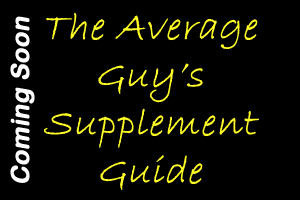Exercise intensity is often a misunderstood concept. How hard should I be working out, or how hard do I need to work out to see
benefits. If you are unaccustomed to exercise, even a moderate amount of intensity will be of benefit. But if you looking to make
noticeable changes to your body, lose weight and increase muscle tone, then exercise intensity is important. In fact, not only is
it important, but along with necessary nutritional changes, it could be the deciding factor in the equation. What I am talking
about is referred to as the “afterburn” or EPOC. EPOC stands for excess postexercise oxygen consumption.
EPOC, or this sustained oxygen consumption was originally referred to as an oxygen debt and was first hypothesized by A. V. Hill and H. Lupton in 1922.
A brief overview of EPOC is provided by Dr. Len Kravitz, PhD., Associate Professor of Exercise Science, The University of New
Mexico.
“During EPOC the body is restoring iteself to its pre-exercise state, and thus is consuming oxygen at an elevated rate. This
means that energy is also being expended at an elevated rate. The following occurs during EPOC:
1. Replenishment of Energy Resources: Replenishment occurs for the immediate source of energy, known as the phosphagen system, which is comprised of creatine phosphate and ATP (adenosine triphosphate).
2. Re-oxygenation of Blood and Restoration of Circulatory Hormones: During exercise metabolism, large amounts of oxygen are used to break down food substrates for energy. Therefore, the body continues to expend energy after exercise to re-oxygenate the blood.
3. Decrease in Body Temperature: As energy is liberated from the exercising muscle tissues of the body, heat is produced. Thus,
during EPOC, the body must expend energy to return to the normal core body temperature.
4. Return to Normal Ventilation and Heart Rate: Energy expenditure is greatly elevated as the body rapidly returns to a normal
breathing rate. Heart rate is also returning to a pre-exercise rate.
Because the body continues to expend energy after exercise, EPOC plays a supplemental role in an exercise program for weight
management.”
Studies have shown that resistance training elevates EPOC for upwards of 24-48 hours after training. Steady state cardio does
not elevate EPOC much, so once your cardio session is done, you are done buring calories. In order to elevate EPOC, you must be
working at an intensity high enough to create this oxygen debt.
So we know now, that creating EPOC will have positive benefits in our weight loss program. The key is what do we have to do in our workout sessions to create EPOC and appreciate the afterburn effect. There are several ways this can be done:
1. Increase the Demand of Each Exercise – Choose exercises that use many muscles or multi joint exercises. For example you get more bang for your buck doing squats that arm curls. Choosing “big” exercises such as squats, deadlifts, kettlebell swings, step ups
will incorporate the whole body. No isolating muscle groups. In fact the more you can group exercises together, the higher the
intensity. Again, instead of doing just a squat, perform a squat with a dumbbell curl to an overhead press. Or perform a romanian
deadlift to a row, or a romanian deadlift with a calf raise to a shoulder shrug. There are endless varieties of exercises that can
be grouped together to take the intensity to the next level. Several exercises can be grouped together into a “complex” and
performed with minimal rest.
2. Increase the Demand of Each Workout – It is not only each exercise that you need to think about, but the whole workout. How
the exercises are grouped together. How the rest periods are incorporated into the workout. Decreasing the rest periods and
increasing the metabolic demand of each exercise will take your workout to the next level and you won't be just feeling the effects
of the afterburn, but you'll be sizzling!
3. Perform High Intense Interval Training – Cardio workouts also need to be looked at. As mentioned above, there is little place
for steady state cardio except in the very early stages of a conditioning program. Once an aerobic base is built, cardio
workouts should consist of high intense intervals. This can be achieved by using hill sprints on a treadmill, kettlebell swings or
sled training. All these workouts will put a huge metabolic demand on the body and create EPOC.
So, take a look at your workouts. Are you working out intensely enough to burn those calories for hours afterward? A good
productive workout should have you breathing hard and sweating! Making changes to your physique takes hard work; there are no short cuts or easy roads to follow. But, making sure your time in the gym is metabolically demanding, will go a long way to giving you the body you want.
